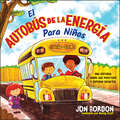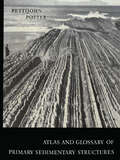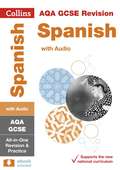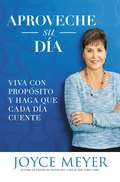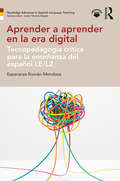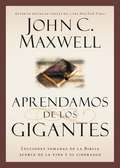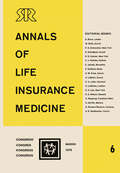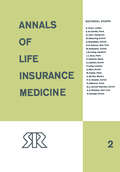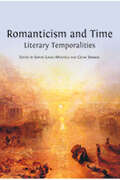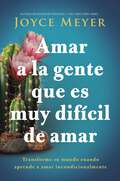- Table View
- List View
Azul
by Rubén DaríoEl poeta nicaragüense fue, sin duda alguna, uno de los poetas hispanoamericanos que más decididamente cambió el rumbo de las letras hispánicas. Publicó sus primeros versos a los once años, y a finales del siglo XIX, ya consagrado, publicó "Azul", obra con la que se inició «oficialmente» el Modernismo Hispanoamericano.
Aventuras de Arthur Gordon Pym
by Edgar Allan PoeAquí encontraremos una serie de aventuras con el toque característico de Poe. Artur es un incansable joven lleno de deseos de viajar y conocer, pero en todos sus viajes debe enfrentar peligros, carencias y estar al borde de la muerte. El terror que nos transmite Poe no es el típico del siglo veinte, sangre, desmembramientos, ni nada por el estilo; es una manera más exquisita de encaminarnos al sufrimiento por zozobra. El peligro es el ingrediente principal pues coloca a sus personajes en lucha contra la naturaleza, el hambre, la inclemencia y por supuesto los seres reales e imaginarios que toda historia de terror debe contener.
Aventura
by Jack LondonLas novelas del escritor estadounidense Jack London, aventuras con héroes solitarios, atormentados y profundamente humanos, reflejan su propia vida y han alcanzado un merecido reconocimiento de público y crítica. Si en 1913 London podía jactarse de ser el escritor más famoso y mejor pagado, podría añadirse que, entre 1903 y 1920, fue asimismo el autor americano más leído fuera de Estados Unidos. Es evidente que Jack London gusta de los episodios dramáticos, de las escenas cuidadosamente preparadas y resueltas con la máxima tensión. Pero si sus historias cautivan al lector, si le obligan a leerlas con el alma suspendida de un hilo, no es sólo porque describan episodios únicos, momentos no corrientes, aventuras insólitas, sino a causa de la peculiar manera en que están contadas. Su estilo, frecuentemente poético en la descripción paisajística, se hace, llegado el momento, directo, enérgico y efectivo. London sabe cómo alcanzar el punto climático adecuado, llevarlo a una situación límite y conservar el suspense, dosificándolo hasta el instante final.
El Autobús de la Energía Para Niños: Una Hístoria Sobre Ser Positivos y Superar Desafíos (Jon Gordon)
by Jon GordonUna adaptación ilustrada de la fábula de negocios más vendida, El Autobús de la Energía Para Niños, enseña a los niños los beneficios de mantenerse positivos. En esta adaptación ilustrada de la fábula más vendida, El Autobús de la Energía Para Niños, el autor Jon Gordon muestra a los niños cómo superar la negatividad, los acosadores y los desafíos cotidianos para ser lo mejor posible. El Autobús de la Energía Para Niños es una historia que enseñará a los niños cómo encontrar su motivación interna y transmitir esa energía positiva a los demás. El Autobús de la Energía Para Niños presenta cinco reglas para el "Paseo de tu vida" Enseña a las niñas cómo alimentar su viaje con energía positiva Comparte con los niños cómo amar a las personas con las que compartes tu viaje y cómo disfrutar el viaje Los niños positivos se convierten en adultos positivos. Así que suba a los niños al El Autobús de la Energía Para Niños e infunda en sus vidas una nueva visión, actitud y positividad.
Auténtica y única: Viva libre de las comparaciones y la necesidad de complacer
by Joyce MeyerDescubre tus dones únicos y atrévete a ser diferente con la autora número uno en ventas del New York Times y reconocida maestra de la Biblia, Joyce Meyer. Dios te ha dado talentos y habilidades para que puedas cumplir su propósito en tu vida, pero si eres como muchas personas, es posible que aún no los hayas reconocido. A menudo, el mundo en el que vivimos nos presiona a vivir a la altura de una determinada imagen, en lugar de ser las personas únicas en las que Dios nos ha creado. Por lo tanto, permite que Dios te muestre qué tienes de especial en la forma que Él te hizo. Conviértete en una persona auténtica y única, ¡porque Dios nunca te ayudará a ser nadie más que tú misma! Él te ama tal como eres. Deja que Dios te use, con todas tus fortalezas y debilidades, y te transforme de adentro hacia afuera para hacer algo mucho más maravilloso que tus sueños más extravagantes.Discover your unique gifts and dare to be different with #1 New York Times bestselling author and renowned Bible teacher Joyce Meyer.God has given you talents and abilities so you can fulfill His purpose for your life, but if you're like a lot of people, you may not have recognized them yet. The world we live in often pressures us to live up to a certain image, rather than be the unique individuals God has created us to be, so let God show you what&’s special about the way He made you.Become Authentically, Uniquely You because God is never going to help you be anyone but yourself! He loves you just as you are. Let God use you, with all your strengths and weaknesses, and transform you from the inside out to do something more wonderful than your wildest dreams.
Atlas and Glossary of Primary Sedimentary Structures
by F. J. Pettijohn P. E. PotterInadequate observation of sedimentary TRUSHKovA and KUKHARENKO'S "Atlas of structures has been responsible for incorrect Placer Minerals." The most comprehensive interpretation of the order of superposition atlas is the "Atlas of Textures and Struc in deformed beds and this has led, in turn, tures of Sedimentary Rocks" edited by A. to gross errors in stratigraphy and structure. V. KHABAKOV (1962). Failure to recognize and utilize those Our Atlas is an outgrowth of our work on structures which indicate direction of cur "Paleocurrents and Basin Analysis," a book rent flow has also led to incorrect, or at in which directional sedimentary structures least incomplete, understanding of basin are described and interpreted with special development. reference to the evolution of sedimentary We believe, therefore, that there is need for basins. That work, however, contains mini a work which constitutes a field guide to the mal photographic material - just enough study of these structures - a book in to give the reader some concept of the sedi which these structures, so difficult to mentary structures described.
El arte de amar
by OvidOvidio nació en el año 43 a. C. en Sulmo, no muy lejos de Roma, y murió desterrado en una remota aldea del Ponto, Tomis. El arte de amar y El remedio del amor, entre otros motivos, ocasionaron su destierro, que le fue impuesto por Augusto, quien permaneció siempre implacable a los ruegos del poeta para que le permitiese regresar a Roma. Escritos con refinamiento poético, con talante lúdico y un tanto irónico, muy atentos a las escenas amorosas y a las peripecias eróticas, utilizando con desenfado los antiguos mitos clásicos, estos libros son tratados con ligereza, e incluso con "levedad", que es lo que confiere a su autor una modernidad indiscutible. Están inspirados por una misteriosa mujer, Corina, que no sabemos si corresponde a una figura real, pero que Los amores hicieron tan famosa como la Lesbia de Catulo, o la Cintia de Propercio.
AQA GCSE Spanish (Collins GCSE 9-1 Revision Ser. (PDF))
by Collins Uk Staff Collins Gcse StaffExam Board: AQA Level & Subject: GCSE Grade 9-1 Spanish First Teaching: September 2016, First Exams: June 2018 Revision that Sticks! Collins AQA GCSE Grade 9-1 Spanish Complete All-in-One Revision and Practice, uses a revision method that really works: repeated practice throughout. A revision guide, workbook and practice paper in one book! With clear and concise revision for every topic, plus seven practice opportunities, Collins offers the best revision at the best price. Includes: • quick tests as you go • end-of-topic practice questions • topic review questions later in the book • mixed practice questions at the end of the book • audio download to practice listening • more topic-by-topic practice in the workbook • a complete exam-style paper • free Q&A flashcards to download online • an ebook version of the revision guide
Aproveche su día: Viva con propósito y haga que cada día cuente
by Joyce Meyer#1 New York Times bestselling author Joyce Meyer shares a purposeful approach to everyday living, helping readers claim the good things God has in store for them each day. Today is no ordinary day. You may perform simple routines, feel uninspired, or lack the excitement of hope. But today could be the most important one of your life -- depending on how you choose to spend it.Joyce Meyer, #1 New York Times bestselling author, encourages you not to waste another minute. There is something special, valuable waiting for you to discover in each day. And when you spend time with God daily, asking Him to help you find it, you'll unlock the wonderful purpose He has in store for you. When you commit to letting God direct you, instead of resting passively in your own disappointments, you'll be open to receive greater happiness and blessings than you ever thought possible.All you need is the right encouragement. With over four decades of experience helping others find fulfillment, Joyce shares key biblical insights and personal stories that will help you make the most of this moment and SEIZE THE DAY!
Aprender a aprender en la era digital: Tecnopedagogía crítica para la enseñanza del español LE/L2
by Esperanza Román-MendozaAprender a aprender en la era digital provides a comprehensive, state-of-the-art account that empowers readers to leverage learning technologies to promote second language learner autonomy. Written entirely in Spanish, the book covers a breadth of innovative topics in the teaching of Spanish via and with technology, such as emerging pedagogies, autonomous and participatory learning, learner agency and identity, teacher development, and post-communicative curriculum design. Key features: a novel and unique approach, combining the latest research on learning autonomy and instructional technologies in language learning; an emphasis on the connections between theory and practice, with concrete suggestions for using technology in the classroom; an extensive selection of curricular and pedagogical tools that can be easily adapted to various teaching and learning environments and needs; a broad selection of bibliographical references for further reading and research; a bilingual glossary of key techno-pedagogical terms; a catalogue with over 250 tools for second language learning and teaching, with contextualized examples of their practical application; a comprehensive eResource with a wealth of additional materials, including access to a database of technological tools and best practices in teaching Spanish with technology. Written in a clear and accessible manner, Aprender a aprender en la era digital is ideal for instructors of Spanish at all educational levels. The book will also be of great interest to teachers of languages other than Spanish, as well as graduate students pursuing a degree in Spanish, Educational Technology or Language Education.
Aprender a aprender en la era digital: Tecnopedagogía crítica para la enseñanza del español LE/L2
by Esperanza Román-MendozaAprender a aprender en la era digital provides a comprehensive, state-of-the-art account that empowers readers to leverage learning technologies to promote second language learner autonomy. Written entirely in Spanish, the book covers a breadth of innovative topics in the teaching of Spanish via and with technology, such as emerging pedagogies, autonomous and participatory learning, learner agency and identity, teacher development, and post-communicative curriculum design. Key features: a novel and unique approach, combining the latest research on learning autonomy and instructional technologies in language learning; an emphasis on the connections between theory and practice, with concrete suggestions for using technology in the classroom; an extensive selection of curricular and pedagogical tools that can be easily adapted to various teaching and learning environments and needs; a broad selection of bibliographical references for further reading and research; a bilingual glossary of key techno-pedagogical terms; a catalogue with over 250 tools for second language learning and teaching, with contextualized examples of their practical application; a comprehensive eResource with a wealth of additional materials, including access to a database of technological tools and best practices in teaching Spanish with technology. Written in a clear and accessible manner, Aprender a aprender en la era digital is ideal for instructors of Spanish at all educational levels. The book will also be of great interest to teachers of languages other than Spanish, as well as graduate students pursuing a degree in Spanish, Educational Technology or Language Education.
Aprendamos de los Gigantes: Lecciones Tomadas de la Biblia Acerca de la Vida y el Liderazgo
by John C. MaxwellIf you could spend a few minutes with the giants of faith in the Old Testament in person, what lessons would they share with you? In LEARNING FROM THE GIANTS John C. Maxwell draws on fifty years of studying the Bible to share the stories of Elijah, Elisha, Job, Jacob, Deborah, Isaiah, Jonah, Joshua and Daniel. These people fought and won epic battles, served kings, and endured great hardships for God to come out on the other side transformed through His grace. Through them Maxwell explores timeless lessons we can learn about leadership, ourselves, and our relationship with God.
Aprendamos de los Gigantes: Lecciones Tomadas de la Biblia Acerca de la Vida y el Liderazgo (Giants of the Bible)
by John C. MaxwellIf you could spend a few minutes with the giants of faith in the Old Testament in person, what lessons would they share with you? In Learning From the Giants John C. Maxwell draws on fifty years of studying the Bible to share the stories of Elijah, Elisha, Job, Jacob, Deborah, Isaiah, Jonah, Joshua and Daniel. These people fought and won epic battles, served kings, and endured great hardships for God to come out on the other side transformed through His grace. Through them Maxwell explores timeless lessons we can learn about leadership, ourselves, and our relationship with God.
Antonio Machado: Lands of Castile and Other Poems (Aris & Phillips Hispanic Classics)
by Salvador Ortiz-Carboneres Paul BurnsAntonio Machado was born in Seville in 1885 and died in southern France early in 1939, escaping from the Nationalist advance in the Spanish Civil War. He is increasingly recognized as one of the four greatest Spanish-language poets of the twentieth century, but lack of adequate translations has limited his appreciation in the English-speaking world. Here a native Spanish and a native English speaker set out to remedy this deficiency. The beauty of his landscape, fused with its sadness as his young wifeÆs resting pace gave Machado his distinctive voice: intimate, elegiac, at once detached and involved, most characteristically expressed in Campos de Castilla (1917), from which many of the poems here selected are taken. The language of his poetry is spare, relying strongly on nouns and adjectives, asserting more than describing, equally anti-baroque and against the æexcesses of modern cosmeticsÆ (Self Portrait). His father had been a collector of folklore, and Machado saw the romance (ballad) tradition as lying at the heart of the authentic Spanish poetic tradition. English cannot recreate the assonance on which he relied, but this translation captures the essential rhythm as well as the poignancy of the original. Spanish text with facing-page translation, introduction and notes.
El anticristo
by Friedrich NietzscheNietzsche quiere expresar aquí la gran desconfianza que siente hacia los grandes impostores y moralistas religiosos. El Anticristo, cuyo subtítulo es Maldición sobre el cristianismo, apareció por primera vez en 1895, cinco años antes de la muerte de Nietzsche. El cristianismo es para el autor la religión de la compasión, y como tal, representa todos los malos instintos de la decadencia, puesto que la compasión está en contraste con las emociones tónicas que elevan la energía del sentimiento vital y es equivalente a la negación de la vida.
Annals of Life Insurance Medicine 6: Proceedings of the 13th International Congress of Life Assurance Medicine Madrid 1979
by Swiss Reinsurance Swiss Reinsurance Company E. Tanner M. L. HeftiToday, the integration of life insurance medicine into the framework of general medicine goes without saying. On the one hand, the diagnostic therapeutic knowledge of clinical medical science forms the tools of the insurance medical adviser for the evaluation of life insurance applications. On the other hand, life insurance medicine has been able to pro vide valuable statistical data for long-term prognosis which have become an essential part of the daily medical practice and prognostic appraisal. This mutual engagement and en richment has again distinctly manifested itself in the scientific program of the 13th Con gress of Life Assurance Medicine held in Madrid. Among the broad and varied data available, the insurance problem of cancer and ma lignant diseases of the haematopoietic system were extensively dealt with for the first time. Diagnostic therapeutic progress increasingly allows valuable insurance cover to be granted to formerly uninsurable risks, a group which is particularly in need of, and re quires, life insurance cover. The number of risks which are uninsurable becomes smaller and smaller.
Annals of Life Insurance Medicine: 1964 Volume II
by Swiss Reinsurance Swiss Reinsurance CompanyOne thousand unselected patients with bronchial asthma have been followed up for an average period of 11 years, with extremes of 33 years and three years. The average period from the first symptoms to the date of follow-up was 20.6 years in the 562 males and 22.3 years in the 438 females, with extremes of 72 years and three years. Since throughout the analysis no differences were found between the sexes, they have been grouped together. Terms used, such as asthma, chronic bronchitis, childhood bronchitis, age of onset, etc., have been carefully defined, as have the descriptions of intermittent and continuous asthma. The present state of the patients has been classified as A (good), B (fair), C (poor), and D (dead). Early age of onset (before 16) and intermittent asthma were associated and had a more favourable prognosis, while the childhood bronchitic had a better outlook than the adult bronchitic. Intermittent and continuous asthma have been compared. The incidence of bronchitis initially was higher in the continuous group, and the tendency to develop bronchitis over the years (present in all asthmatics) was also greater in the continuous group. Those with bronchitis were in much poorer health on follow-up than those without.
Ana Karenina
by Leon TolstoiAna Karenina, quizás la novela más famosa de León Tolstoi, narra las vidas paralelas de dos personajes que se encuentran sólo por un instante: la de Ana y la de Levin. Ambas historias se abordan simultáneamente y una arroja luz sobre la otra: Ana viviendo una vida trágica y Levin encontrando la pareja adecuada para formar una familia. La gran protagonista de esta obra parece ser la familia rusa y los ambientes en que se expresa su espíritu: la sociedad aristocrática de San Petesburgo, el gran mundo de Moscú, la sencillez de la vida en la serenidad del campo... Y junto a esa pintura del mundo ruso está el estudio psicológico de los personajes.
An Outline of Romanticism in the West
by John Claiborne IsbellNavigating the landscape of Romantic literature and art across Europe and the Americas, An Outline of Romanticism in the West invites readers to embark upon a literary journey.
An Outline of Romanticism in the West
by John Claiborne IsbellNavigating the landscape of Romantic literature and art across Europe and the Americas, An Outline of Romanticism in the West invites readers to embark upon a literary journey.
An Outline of Romanticism in the West
by John Claiborne IsbellNavigating the landscape of Romantic literature and art across Europe and the Americas, An Outline of Romanticism in the West invites readers to embark upon a literary journey.
El amor enamorado
by Lope De VegaLope de Vega concibe sus comedias para ser representadas y no para su publicación. Como escritor polifacético que cultiva prácticamente todos los géneros de escritura habituales en su época, excepto la novela picaresca, el Lope todavía joven confía en que la fama y el reconocimiento de sus méritos literarios le llegarán no tanto por su teatro como por otras obras suyas cuya publicación supervisa al inicio de su carrera. La publicación en serie de las comedias de Lope no se inicia hasta el año 1604, cuando se publica la primera de las llamadas Partes, volúmenes en que se agrupan por lo general doce comedias para su edición. Hhay subgéneros teatrales muy específicos por su temática que Lope apenas cultiva durante la primera etapa, escribe posteriormente: Las mujeres sin hombre sobre las Amazonas, La fábula de Perseo, El laberinto de Creta, El vellocino de oro, El marido más firme sobre el mito de Orfeo, La bella Aurora y El amor enamorado. Se trata de un ciclo minoritario, pero que Lope desarrolla con posterioridad a 1604.
El amigo de la muerte
by Pedro Antonio de AlarcónCon El Amigo de la Muerte me ha ocurrido una cosa singularísima. Contóme mi abuela paterna su argumento, cuando yo era niño, como me contó otros muchos cuentos de brujas, duendes, endemoniados, etc. Lo escribí en compendio antes de salir de Guadix, y lo publiqué en un semanario de Cádiz, titulado El Eco de Occidente. Visto su éxito, lo amplié en Madrid y volví a publicarlo en La América; y desde entonces hice de él ediciones continuas en mis colecciones de novelas. -Pues bien: hace pocos meses, un amigo queridísimo me contó que acababa de oír cantar en el teatro Real de esta villa y Corte una antigua ópera, titulada Crispino e la Comare, cuyo argumento venía a ser el mismo, mismísimo, de El Amigo de la Muerte. -Nunca había visto yo aquella ópera, aunque sí la conocía de nombre. Por otra parte, ningún crítico ni gacetillero, de los muchos que han analizado minuciosamente mis escritos, me habla acusado por tal semejanza, que parecía denunciar el más imprudente y cándido de los plagios..... Protesté, en consecuencia, contra la afirmación de mi amigo, no pudiendo admitir que dos autores concibieran independientemente dos fábulas tan parecidas..... Pero mi amigo (que es catalán) se calló, compró el libreto de Crispino e la Comare y me lo envió..... -¡Figuraos mi asombro! ¡El asunto de ambas obras no tenía meramente semejanza! ¡Era el mismo, con la circunstancia agravante de que la ópera llevaba fecha anterior a mi cuento! -¡Luego yo había sido el plagiario!..... -Pero ¿cómo, sin conciencia de lo que hacía? ¿Cómo, si mi memoria, mi entendimiento y mi voluntad me declaraban inocente? Pronto caí en la cuenta de lo que sin duda alguna había acontecido: el cuento, por su índole, era popular, y las viejas de toda Europa lo estarían refiriendo, como las de España, Dios sabe desde qué centuria. ¡Al autor de Crispino e la Comare se lo había contado su abuela y a mí me lo había contado la mía! -Por lo demás, excusado es decir que entre la obra lírico-dramática y mi cuento notábanse sobradas diferencias externas para justificar esta explicación.
Amar a la gente que es muy difícil de amar: Transforme su mundo cuando aprende a amar incondicionalmente
by Joyce MeyerEl secreto para amar a la gente que es difícil de amar es amarla de todos modos... Jesús aconseja que &“se amen los unos a los otros. Así como yo los he amado, también ustedes deben amarse los unos a los otros&” (Juan 13:34 NVI). Suena maravilloso, amar a todos como Jesús lo ama a usted. Pero, a menudo, la realidad de vivir de esta manera es más desafiante o puede parecer imposible, porque muchas personas son simplemente difíciles de amar. Probablemente usted sepa esto por experiencia personal. Tal vez sea un compañero de trabajo poco amigable, un vecino entremetido o alguien de su familia o su ex pareja. Y más en estos días, donde las redes sociales y otros medios de internet son fuentes comunes de comunicación hostil. No obstante, Dios quiere ayudarle a amar a los demás como Él lo ama a usted, incluso a quienes son más difíciles de amar. En este libro, Joyce Meyer comparte la sabiduría práctica de la Biblia y sus experiencias personales sobre cómo superar los obstáculos para amar a las personas difíciles. Descubrirá cómo ser un pacificador en circunstancias tensas o incluso volátiles, convertirse en una persona que no se ofende fácilmente, saber cuándo adaptarse a los demás y el secreto para amar como Jesús cuando parece imposible hacerlo. Con la ayuda de Dios, puede convertir las interacciones frustrantes en agradables y traer la paz que apaga el fuego de la contienda cuando estallan las discusiones. No tiene que vivir bajo una nube de intimidación o temor al tratar con personas difíciles, ya sean conocidos o personas cercanas a usted. Cuando aprenda a amar como Jesús, ¡será libre de amar a la gente que es difícil de amar!
Amalia
by José MármolAmalia ha sido señalada, con justicia, como la más importante novela sudamericana del siglo XIX. En una narración ágil, que combina las más dramáticas situaciones con ingeniosos toques de humor, la acción se sitúa en los conflictivos años de la tiranía de Juan Manuel de Rosas. En sus páginas se describen los más diversos tipos humanos, en fiel y vívida pintura: desde los canallescos del bajo fondo hasta los más encumbrados política o socialmente, todo ello avalado por la visión testimonial de su autor, José Mármol, quien fuera, además de contemporáneo y testigo directo, víctima de los excesos que describe. En Amalia encontrará el lector actual, además de un minucioso retrato de época, una atrapante historia donde a los crímenes y pasiones se mezclan los actos de heroísmo, como en los mejores folletines. Junto a los protagonistas Daniel Bello y Eduardo Belgrano, uno que encarna al autor y el otro vagamente inspirado en un personaje real, y a la heroína que da nombre a la novela, desfilan numerosos personajes reales: Juan Manuel de Rosas, su hija Manuelita, sus hermanas Mercedes y Agustina, los bufones, los sanguinarios mazorqueros, todos ellos retratados vívidamente, como si sus pasos aún resonaran en un Buenos Aires pretérito, lejano, pero al mismo tiempo reconocible. Amalia apareció justamente en forma de folletín, cuya continuación los lectores esperaban ansiosamente.

